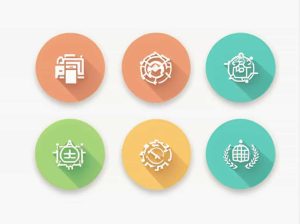The business cycle refers to the natural fluctuations in economic activity that occur over time. It consists of different phases each representing a shift in the economy’s performance. One of these phases is known as the upswing a period of recovery and growth.
In this topic we will explore what the upswing phase is how it works and why it is crucial for businesses investors and policymakers. We will also discuss the key economic indicators that signal an upswing and the factors that drive this phase of the business cycle.
Understanding the Business Cycle
The business cycle consists of four main phases:
- Expansion (Upswing/Recovery) – The economy grows employment rises and businesses thrive.
- Peak – Economic growth reaches its highest point before slowing down.
- Contraction (Recession/Downturn) – Economic activity declines leading to job losses and lower production.
- Trough – The lowest point of economic activity before recovery begins.
The upswing refers to the expansion phase where economic conditions improve and growth accelerates.
What Happens During the Upswing Phase?
The upswing phase marks a period of economic recovery and expansion after a slowdown or recession. During this phase several positive changes occur:
✔ Increase in GDP – The Gross Domestic Product (GDP) starts rising indicating economic growth.
✔ Rising Employment – Businesses hire more workers reducing unemployment rates.
✔ Higher Consumer Spending – As people feel more confident they spend more on goods and services.
✔ Business Investment Grows – Companies invest in new projects equipment and expansion.
✔ Stock Market Gains – Investors gain confidence leading to higher stock prices and market optimism.
The upswing phase sets the stage for sustained economic growth encouraging businesses and consumers to engage in more economic activities.
Key Economic Indicators of an Upswing
Several economic indicators help identify the upswing phase of the business cycle:
1. GDP Growth Rate
✔ A rising GDP is a clear sign that the economy is expanding.
✔ During an upswing GDP growth is positive and increasing over time.
2. Employment Rates
✔ Job creation accelerates and unemployment rates decline.
✔ More people find jobs leading to higher household incomes.
3. Consumer Confidence Index (CCI)
✔ Measures how optimistic consumers are about the economy.
✔ A higher CCI indicates increased consumer spending and demand.
4. Stock Market Performance
✔ Stock prices rise as investors anticipate higher corporate profits.
✔ Bullish stock markets reflect economic optimism.
5. Business Investment Trends
✔ Companies increase spending on factories technology and infrastructure.
✔ More businesses take out loans and credit to fund expansion.
When these indicators show positive trends it confirms that the economy is in an upswing phase.
What Causes the Upswing Phase?
Several factors contribute to an economic upswing:
1. Increased Consumer Spending
✔ People feel more secure about their jobs and income leading to higher spending.
✔ Strong consumer demand boosts business revenues encouraging more production.
2. Business Expansion and Investment
✔ Companies invest in new products markets and infrastructure.
✔ Higher investment leads to more job creation and productivity growth.
3. Government Policies and Stimulus
✔ Governments may introduce tax cuts interest rate reductions or stimulus packages.
✔ Lower interest rates encourage borrowing and investment.
4. Technological Innovation
✔ New technologies create new industries and job opportunities.
✔ Increased efficiency and productivity drive higher economic output.
5. Global Trade and Export Growth
✔ Higher demand for exports strengthens domestic industries.
✔ Trade agreements and global economic recovery support faster economic growth.
These combined forces help sustain an upswing phase in the economy.
How Long Does the Upswing Last?
The upswing phase can last for several years but its duration depends on:
✔ Economic policies – Well-managed fiscal and monetary policies can extend growth.
✔ Global economic conditions – If the global economy is stable growth is more sustainable.
✔ Market stability – A balanced economy with controlled inflation supports long-term expansion.
However if growth becomes unsustainable—for example due to excessive debt inflation or asset bubbles—the economy may enter a downturn or recession.
Why Is the Upswing Phase Important?
✔ Boosts Employment – More jobs lead to improved living standards.
✔ Encourages Business Growth – Companies expand innovate and generate higher revenues.
✔ Improves Government Finances – Higher tax revenues allow for better public services.
✔ Enhances Investor Confidence – The stock market performs well attracting more investments.
The upswing phase benefits individuals businesses and governments making it a crucial period for economic stability and prosperity.
Challenges and Risks During an Upswing
While the upswing phase brings many benefits it also comes with potential risks:
✔ Inflation Risks – Rapid growth can lead to rising prices reducing purchasing power.
✔ Asset Bubbles – Excessive speculation in real estate stocks or commodities can create financial instability.
✔ Overconfidence in Markets – Investors and businesses may become too optimistic leading to risky financial decisions.
To maintain long-term economic stability policymakers must monitor growth trends and prevent overheating.
The upswing phase of the business cycle is a period of economic expansion job growth and increasing prosperity. It follows a downturn or recession and marks a recovery in economic activity.
✔ Key signs of an upswing include rising GDP lower unemployment higher consumer spending and strong business investment.
✔ Factors driving an upswing include consumer confidence business expansion government policies and technological advancements.
✔ While an upswing is beneficial it must be carefully managed to prevent inflation asset bubbles and financial instability.
Understanding the upswing phase helps businesses investors and policymakers make informed decisions ensuring sustainable economic growth and stability.



